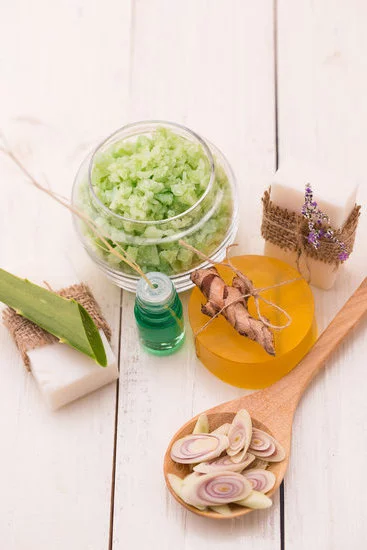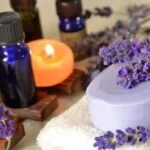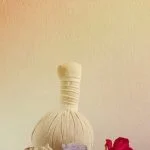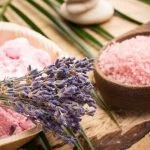Aromatherapy is a holistic healing technique that uses natural plant extracts to promote health and well-being. Aromatherapy oils, also known as essential oils, are the key ingredients in this practice and are used for their therapeutic properties. In this article, we will explore how to make homemade aromatherapy oils, allowing you to create personalized blends tailored to your specific needs.
Homemade aromatherapy oils offer a natural alternative to store-bought products, giving you full control over the ingredients and customization of scents. The benefits of using homemade aromatherapy oils extend beyond their therapeutic properties, as they can also serve as a cost-effective and sustainable option for wellness and self-care practices.
In the following sections, we will delve into understanding the different types of essential and carrier oils needed for homemade aromatherapy blends, as well as the equipment and supplies required for the extraction process. We will also discuss various methods of extraction, blending techniques, safety precautions, and creative ways to incorporate these oils into your daily routine.
With this comprehensive guide, you will be equipped with the knowledge to embark on your journey of making homemade aromatherapy oils from start to finish.
Essential Oils and Carrier Oils
Essential oils are highly concentrated plant extracts that have been used for their therapeutic properties for centuries. They are derived from different parts of the plant, such as the flowers, leaves, or roots, and are known for their strong aroma and therapeutic benefits. On the other hand, carrier oils are used to dilute essential oils before applying them to the skin. They are often referred to as base oils or vegetable oils and do not contain a strong aroma.
Best Essential Oils for Homemade Aromatherapy Oils
When making homemade aromatherapy oils, it’s important to choose high-quality essential oils that best suit your needs. Some popular essential oils for aromatherapy include lavender, peppermint, eucalyptus, tea tree, and lemon. Each essential oil has its own unique properties and benefits, so it’s important to research and select the right ones for your desired therapeutic effects.
Choosing the Right Carrier Oil for Your Aromatherapy Blend
Carrier oils play an essential role in aromatherapy by diluting the potency of essential oils while providing nourishment and hydration to the skin. Some common carrier oils include coconut oil, jojoba oil, sweet almond oil, and grapeseed oil.
When choosing a carrier oil for your homemade aromatherapy blend, consider factors such as skin type, shelf life, absorption rate, and any potential allergies or sensitivities. Experimenting with different carrier oils can help you find the perfect combination that suits your skin and desired aroma.
| Essential Oils | Carrier Oils |
|---|---|
| Lavender | Coconut Oil |
| Peppermint | Jojoba Oil |
| Eucalyptus | Sweet Almond Oil |
Equipment and Supplies
Making homemade aromatherapy oils requires a few essential equipment and supplies to ensure that the process is smooth and successful. Some of the items needed include glass bottles for storing the oils, a carrier oil of your choice, essential oils, a funnel, and labels for proper identification. These supplies can easily be found at local health food stores or online retailers specializing in aromatherapy products.
When it comes to purchasing quality essential oils and carrier oils, it’s important to do your research and buy from reputable suppliers. Look for oils that are 100% pure and preferably organic to ensure that you are getting the best quality. Investing in high-quality oils will not only enhance the therapeutic benefits of your homemade aromatherapy oils but also provide a more enjoyable aromatic experience.
In addition to these supplies, having the right equipment is crucial for making homemade aromatherapy oils. A glass or stainless steel pot for extraction methods such as steam distillation, a cold press machine for certain plant materials, as well as measuring utensils for accurate blending and dilution are all necessary tools for creating your own customized blends.
By having the appropriate equipment and supplies on hand, you’ll be well-equipped to begin your journey into making personalized aromatherapy oils at home.
Now that you understand what equipment and supplies are needed for making homemade aromatherapy oils, let’s delve into the different methods of extraction. Understanding how essential oils are extracted from plants is an important part of the process, so stay tuned for our next section where we explore this topic in more detail.
Different Methods of Extraction
When it comes to making homemade aromatherapy oils, the process of extracting essential oils from plants is crucial. There are various methods of extraction, each with its own unique benefits and considerations. Here are the different methods you can explore:
1. Steam Distillation: This is one of the most common methods used to extract essential oils from plant material. It involves using steam to gently extract the oils from the plant without degrading their aromatic properties. You can easily set up a simple steam distillation apparatus at home using a pot, heat-resistant bowl, and condenser.
2. Cold Pressing: This method is typically used for citrus fruits, where the oil is mechanically pressed out from the rind of the fruit. Cold pressing retains more of the natural aroma and beneficial properties of the oil compared to other extraction methods.
3. Solvent Extraction: In this method, a solvent such as alcohol or hexane is used to extract essential oils from plant material. While it is an efficient method, it may not be suitable for DIY enthusiasts due to safety concerns associated with handling solvents.
Step-by-Step Guide on How to Extract Essential Oils at Home
– Choose your plant material: Select fresh herbs, flowers, or citrus fruits that are rich in aromatic oils.
– Prepare your extraction method: Depending on which extraction method you choose, gather all necessary equipment and set up your extraction apparatus.
– Begin the extraction process: Follow specific instructions for each extraction method (e.g. adding water and plant material for steam distillation).
– Collect and store your essential oil: Once extracted, carefully collect and store your homemade essential oil in dark glass bottles away from sunlight and heat.
By exploring these different methods of extraction and following a step-by-step guide, you can create high-quality homemade aromatherapy oils that capture the pure essence of plants.
Blending and Dilution
Importance of Properly Blending and Diluting Essential Oils
When it comes to making homemade aromatherapy oils, it’s crucial to understand the importance of properly blending and diluting essential oils. Blending essential oils allows you to create unique scents and therapeutic properties that cater to your specific needs. However, it’s essential to dilute essential oils with a carrier oil before applying them to the skin to prevent irritation or adverse reactions. Proper blending and dilution can also help enhance the therapeutic benefits of the essential oils.
Tips for Creating Personalized Aromatherapy Oil Blends
Creating personalized aromatherapy oil blends can be a fun and rewarding experience. To start, consider the therapeutic benefits you want to achieve, such as relaxation, mood enhancement, or respiratory support.
Research the best essential oils for your desired effects and experiment with different scent combinations until you find one that resonates with you. Keep in mind that some essential oils are stronger than others, so be sure to use them sparingly and always test your blend on a small area of skin before widespread application.
Using Carrier Oils for Dilution
Carrier oils play a vital role in diluting essential oils for safe use on the skin. Some popular carrier oils include jojoba oil, coconut oil, almond oil, and olive oil. Each carrier oil has its own unique properties and absorption rates, so it’s important to choose one that complements your blend of essential oils. Additionally, carrier oils can help extend the shelf life of your aromatherapy oil blends while providing additional moisturizing benefits for the skin.
By paying attention to these important factors, you can create personalized aromatherapy oil blends that not only smell delightful but also promote health and wellness in a safe manner.
Remember that proper blending is key when making homemade aromatherapy oils – this
Safety Precautions
When making homemade aromatherapy oils, it is important to prioritize safety precautions to ensure that the process is not only enjoyable but also safe for everyone involved. Here are some key guidelines to keep in mind:
1. Dilution is key: Essential oils are highly concentrated and should never be applied directly to the skin without dilution. Always use a carrier oil such as coconut, almond, or jojoba oil to dilute essential oils before applying them topically.
2. Patch test: Before using any new aromatherapy blend, it’s crucial to perform a patch test on a small area of the skin to check for any adverse reactions. This is especially important if you have sensitive skin or are prone to allergies.
3. Storage and handling: Store your homemade aromatherapy oils in dark glass bottles in a cool, dry place away from direct sunlight and heat. Keep them out of reach of children and pets. When handling essential oils, use caution and avoid contact with eyes or mucous membranes.
4. Use caution during pregnancy: Certain essential oils can be harmful during pregnancy or while breastfeeding. It’s essential to research which oils are safe to use during this time or consult with a healthcare professional before using any new blends.
5. Educate yourself: Before diving into the world of homemade aromatherapy oils, take the time to educate yourself on each individual oil’s properties, potential side effects, and proper usage. Understanding how each oil works will allow you to create effective and safe blends for your needs.
By following these safety precautions, you can enjoy all the benefits of homemade aromatherapy oils without compromising on safety and well-being. Whether you’ll be using them for relaxation, skincare, or general wellness purposes, being mindful of these guidelines will ensure a positive experience with your DIY essential oil blends.
Uses and Applications
Aromatherapy oils have a wide range of uses and applications, making them a versatile and valuable addition to any natural health and wellness routine. From promoting relaxation and reducing stress to enhancing skincare and creating a soothing atmosphere, homemade aromatherapy oils offer endless possibilities for personal use and self-care.
Aromatherapy and Diffusion
One of the most popular ways to use aromatherapy oils is through diffusion. A few drops of your favorite essential oil blend added to a diffuser can fill the air with delightful scents, creating a calming or uplifting environment in any space. Diffusing essential oils can also help purify the air, eliminate odors, and enhance mental clarity.
Massage and Body Treatments
Another common application of homemade aromatherapy oils is in massage therapy and body treatments. When properly diluted with a carrier oil, essential oils can be used for therapeutic massage, helping to ease muscle tension, reduce inflammation, and promote relaxation. Additionally, incorporating aromatherapy oils into skincare products such as lotions, bath salts, and body scrubs can nourish the skin while offering aromatic benefits.
DIY Aromatherapy Products
For those interested in exploring their creative side, homemade aromatherapy oils can be used to formulate an array of do-it-yourself (DIY) products. From candles and room sprays to bath bombs and natural perfumes, there are endless opportunities for crafting personalized aromatherapy-based items that cater to individual preferences and needs.
Conclusion and Tips
In conclusion, making homemade aromatherapy oils can be a rewarding and fulfilling experience. Not only do you have the opportunity to create personalized blends that cater to your specific needs and preferences, but it also allows you to fully understand and appreciate the process of extracting and blending essential oils.
By following the step-by-step guide provided in this article, you now have a better understanding of what aromatherapy oils are, how to differentiate between essential and carrier oils, the equipment and supplies needed for creating your own blends, as well as the different extraction methods available.
One of the most important aspects of creating homemade aromatherapy oils is ensuring that you are utilizing safe practices. It is crucial to be aware of the potential risks and hazards associated with essential oils, as well as understanding safety guidelines for handling and storing them properly. This will not only protect your own well-being but also ensure that your creations are safe for those who will be using them.
In addition, don’t be afraid to experiment with different scent combinations and carriers oils. There’s no one-size-fits-all approach when it comes to aromatherapy, so feel free to explore new fragrances and adjust dilution ratios based on your personal preference. As you continue on your journey of creating homemade aromatherapy oils, keep an open mind and enjoy the process of customizing your blends to suit your individual needs.
Frequently Asked Questions
How Do You Make Aromatherapy Oil at Home?
Making aromatherapy oil at home can be a simple process. You’ll need a carrier oil like jojoba or coconut, and your choice of essential oils for fragrance. Simply mix the essential oils into the carrier oil and store it in a dark glass bottle.
What Is the Best Oil to Make Homemade Essential Oils With?
The best oil to make homemade essential oils with is often considered to be jojoba oil. It has a long shelf life, is odorless, and has similar properties to the skin’s natural oils, making it an ideal carrier for essential oils.
How Are Aromatherapy Oils Made?
Aromatherapy oils are made through a process of steam distillation or cold pressing. For example, lavender essential oil can be extracted by steam distilling the flowers of the lavender plant. Cold pressing is often used for citrus fruits like lemon or orange to extract their fragrant essential oils.

Are you looking for a natural way to improve your health and wellbeing?
If so, aromatherapy may be the answer for you.





